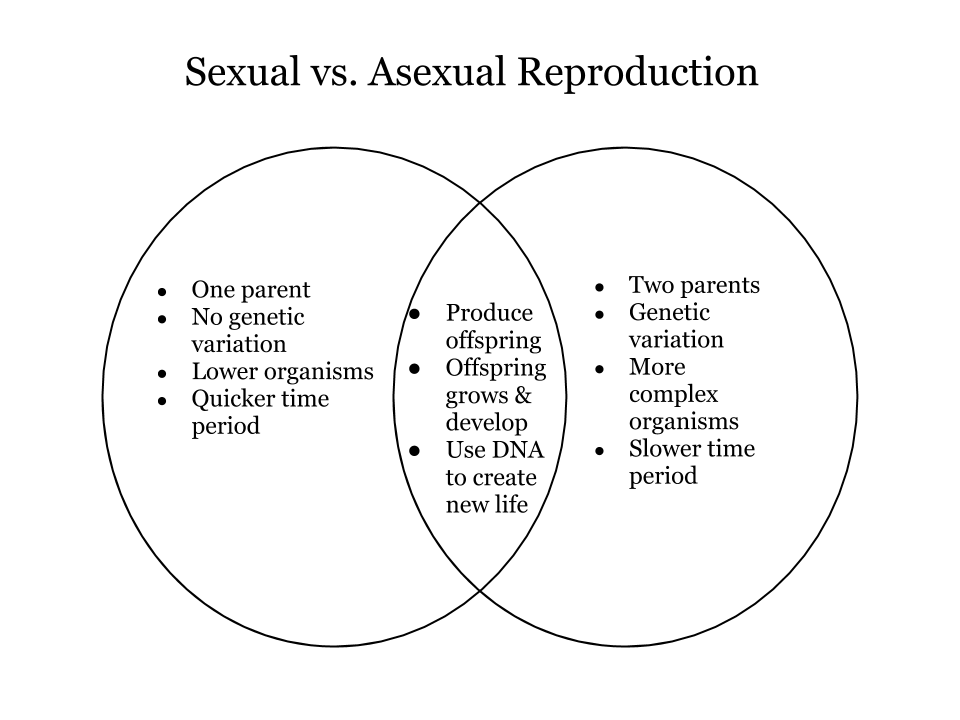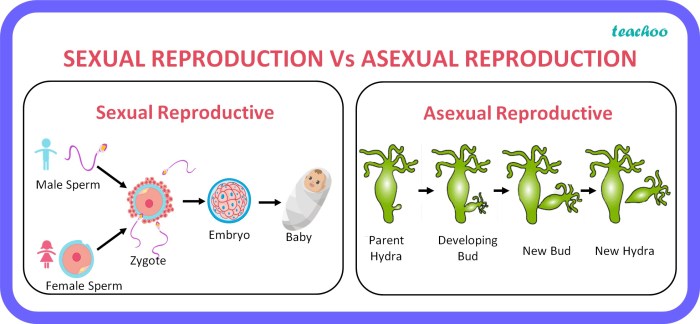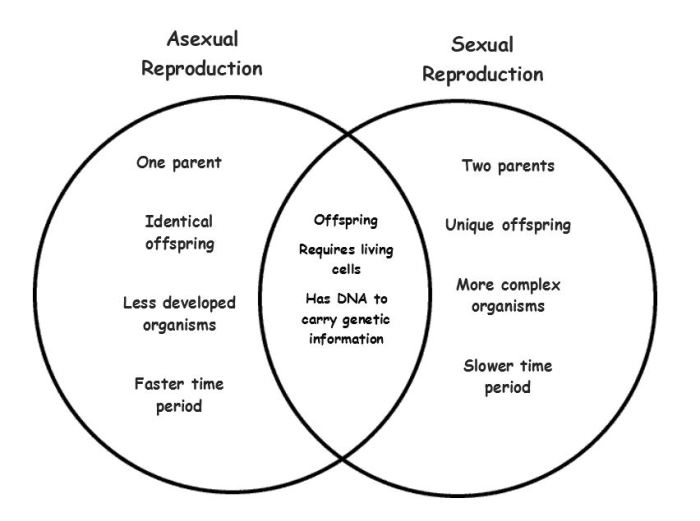Sexual vs asexual reproduction venn diagram – As the title suggests, this exploration delves into the fascinating realm of sexual and asexual reproduction, utilizing a Venn diagram to illuminate their fundamental similarities and distinctions. Join us as we embark on a journey that unravels the intricacies of these two reproductive strategies, revealing their profound impact on the evolution, adaptation, and resilience of life on Earth.
Through the lens of genetic variation, energy requirements, speed and efficiency, adaptations and evolution, and ecological impact, we will dissect the nuances of sexual and asexual reproduction. By contrasting their key aspects, we gain a deeper understanding of the diverse reproductive strategies employed by organisms across the vast tapestry of life.
Questions and Answers: Sexual Vs Asexual Reproduction Venn Diagram
What is the primary distinction between sexual and asexual reproduction?
Sexual reproduction involves the fusion of gametes (sex cells) from two individuals, resulting in genetic recombination and offspring with a unique combination of traits. In contrast, asexual reproduction involves the production of offspring from a single parent without the fusion of gametes, resulting in genetically identical offspring.
How does genetic variation contribute to the survival of species?
Genetic variation, generated through sexual reproduction, provides the raw material for natural selection to act upon. It increases the likelihood that some individuals within a population will possess traits that enhance their survival and reproductive success in changing environmental conditions.
Why might an organism adopt asexual reproduction over sexual reproduction?
Asexual reproduction offers certain advantages, such as rapid population growth, energy efficiency, and the ability to colonize new habitats quickly. It is often favored in stable environments where genetic variation is less crucial for survival.


